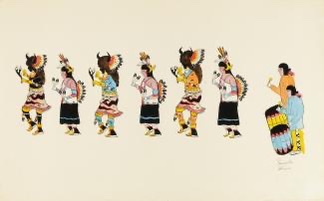North America, Part 1
In 1492, the indigenous population of what are now the U.S. and Canada was 3.8 million, after which incursions were made by the French, Spanish, and English. By 1900, the resulting warfare, maltreatment, and imported pestilence decimated an estimated 90-plus percent of the so-called Indians, and those not annihilated were relocated westward. In addition, Native Americans had a disproportionate genetic predisposition for alcohol addiction, which sometimes led to death. Their culture was also trampled upon until 1996, when Canada closed its last mandatory assimilation school.
Today’s latest population estimates of these indigenous peoples are 6.8 million in the U.S. and 1.7 million in Canada, totaling 8.5 million—an actual increase of less than double since 1492, whereas our world population has increased twenty-sevenfold since then. I speculate that the number of people with 100 percent North American Indian blood is now at its all-time low, and will probably decrease further with future intermarriage. To qualify as Native American, an individual needs only an ancestry of one fourth—and in some cases one sixteenth. Even though North America has become a melting pot, we’ve unfortunately not become homogeneous enough to disregard the social construct of race.
Before the European invasions there were thousands of tribes. None of their forebears had a written language to chronicle their history before 1492; thus writings of American Indian history reflect only the knowledge that was either sung or spoken.
For the sake of history and current thinking, I’ll first review the history of female entertainers among the original inhabitants of North America. We may safely assume that women were rarely, if ever, portrayed as instrumental in tales of important events in early times. Men were considered the revered wise ones who passed down stories of war, hunting exploits, sparse and plentiful crops, and the infinite cycles of life. Also, male-dominated, if not exclusively male, dances beseeched success in battles and hunts, healing, desired weather changes, blessed marriages, fertility, and all other issues of importance. To accompany the dances there were chants, songs, drums, sticks, and rattles. The performers adorned their bodies with hides and multicolored feathers, often in such abundance that their faces were obscured.
By 1890 the Ghost Dance was created, and it soon spread throughout the tribes. A rebellious response to the indigenous people’s sufferings brought on by the North American westward expansion, its message was that they would eventually overcome the impositions of “the white men.” The U.S. and Canadian governments attempted to ban this and other dances, but with scant success.
In 1884, prior to the advent of the Ghost Dance, a 75 percent Native American, Lillian Margaret Cyr, was born on the Winnebago Reservation in Nebraska. Her mother was a Winnebago Indian, but only her paternal grandmother was fully indigenous—her paternal grandfather was a French Canadian. When Lillian was four years old, her mother died, and her father died while Lillian was living away at school.
As was the case with her older sister, Julia, and two other siblings, Lillian was removed from her home to attend one of the U.S. cultural immersion boarding schools. A reluctant ten-year-old in 1902, Lillian was sent to Carlisle Indian Industrial School in Pennsylvania. By graduation at eighteen, she had accumulated valuable insights into white Anglo-Saxon Protestant ways.
Lillian debuted as an actress at age five. In Philadelphia she performed in the Gilbert and Sullivan musical H.M.S. Pinafore, attended by high society and mentioned in a newspaper review. Whether Lillian had hopes of further public performances upon completing her education is not known. Regardless, she left for Washington, D.C., to work as a domestic servant for Kansas Senator Chester L. Long and his wife.
To Be Continued

